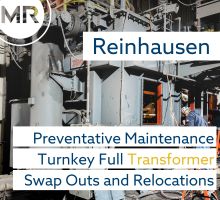U. S. Steel Clairton Coke Plant Accident: Engineering Design & Testing Corp. Releases Preliminary Findings
10/17/2025 - Forensic consulting firm Engineering Design & Testing Corp. (EDT), retained by United States Steel Corporation, has released its preliminary findings regarding its ongoing investigation into the Clairton Coke Plant accident which took place in August.
EDT said that Thomas D. Traubert, its vice president and chief engineer, conducted the ongoing investigation.
The explosion took place on the 13-14 coke battery transfer area; an 18-inch cast-iron valve ruptured, releasing flammable coke oven gas which subsequently exploded. The valve was originally manufactured in 1953 and was refurbished about 10 years ago. Damage to the other valves at 13-14 coke battery was determined to have come from the explosion, EDT said.
U. S. Steel employees and employees of MPW Industrial Services were opening and closing the valve to ensure proper operation in advance of planned maintenance at the time the valve ruptured, the report said.
Water at a high pressure was introduced into the valve to flush accumulated deposits. A sealed cavity inside the body of the valve filled with high-pressure flush water over the pressure rating of the valve, resulting in a sudden and complete rupture of the valve body. This released combustible coke oven gas which accumulated in the transfer area basement and exploded when it reached an ignition source at the 14 battery.
As part of his investigation, Traubert reviewed U. S. Steel’s procedures for maintaining its Clairton factory valves. He found that in the past, low-pressure steam had been used to clean the valves; he determined U. S. Steel did not have a specific procedure addressing the use of high-pressure water to flush valves.
U. S. Steel has an established management of change procedure that should have been used to evaluate the change from low-pressure steam to high pressure water, EDT said.
The investigation is ongoing pending future testing and review of additional information as it becomes available.
The explosion took place on the 13-14 coke battery transfer area; an 18-inch cast-iron valve ruptured, releasing flammable coke oven gas which subsequently exploded. The valve was originally manufactured in 1953 and was refurbished about 10 years ago. Damage to the other valves at 13-14 coke battery was determined to have come from the explosion, EDT said.
U. S. Steel employees and employees of MPW Industrial Services were opening and closing the valve to ensure proper operation in advance of planned maintenance at the time the valve ruptured, the report said.
Water at a high pressure was introduced into the valve to flush accumulated deposits. A sealed cavity inside the body of the valve filled with high-pressure flush water over the pressure rating of the valve, resulting in a sudden and complete rupture of the valve body. This released combustible coke oven gas which accumulated in the transfer area basement and exploded when it reached an ignition source at the 14 battery.
As part of his investigation, Traubert reviewed U. S. Steel’s procedures for maintaining its Clairton factory valves. He found that in the past, low-pressure steam had been used to clean the valves; he determined U. S. Steel did not have a specific procedure addressing the use of high-pressure water to flush valves.
U. S. Steel has an established management of change procedure that should have been used to evaluate the change from low-pressure steam to high pressure water, EDT said.
The investigation is ongoing pending future testing and review of additional information as it becomes available.



.jpg?lang=en-US&ext=.jpg)
.gif?width=220&height=200&mediaprotectionhash=374c6b9a31f2b2fbfc7937391034efb46fd57feba997b9ad2ae9a0bd3d48329d&ext=.gif)

.gif?width=100&height=200&mediaprotectionhash=e2d5b15d68f84f22038524be6c58e5268d67b7f44494b544e29a8d53c5b959ba&ext=.gif)


